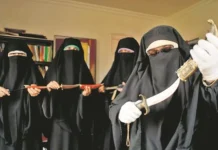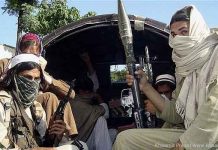Surinder Koul
New Delhi (NVI): With China carrying out brazen aggression against India on the Ladakh border, it has become amply clear that the Communist neighbour could never be trusted. But it seems the Indian security establishment had sunk into complacency by the Chinese pep talk, particularly over the last three decades.
Top Chinese leaders have been stating that India and China are not rivals or adversaries but “natural cooperative partners”, which apparently lulled New Delhi into a state where it stopped keeping vigil. This lack of proper vigilance has led India into a situation in Ladakh, from which extrication seems extremely difficult.
The behavior of China on the Line of Actual Control (LAC) since May can even be likened to the one witnessed in 1962, except for the fact that so far no bullet has been fired.
Therefore, it won’t be wrong to say that if you don’t learn lessons from history, you are bound the regret in future.
After the 1962 war, India and China had come up with the Colombo Plan, under which the armies of the two countries had to move away from the LAC by as far as 20 kms in Western sector, that is, Ladakh. For keeping vigil along the LAC, it was agreed that there will be posts manned by civil police.
Accordingly, the Indian government decided to raise Indo-Tibetan Border Force to man the boundary with China.
Stung by the Chinese deceit, policymakers in India had also come up with an idea of launching a covert operation in Tibet to fuel insurgency by cashing in on the anger among the local populace against Chinese occupation and forced exile of their spiritual guru the Dalai Lama who had to flee to India along with thousands of his followers.
For the purpose, a plan was devised to clandestinely airdrop in Tibet personnel of Indo-Tibetan Border Force who would be imparted special training in equipment and the art of indoctrinating people with ideology.
The first battalion of ITBF (which later became Indo-Tibetan Border Police) comprised mostly the recruits from Punjab and Western Uttar Pradesh. Interestingly, preference was given to youth with some criminal notoriety and rebellious bent of mind.
The idea of covert operation was a good one to hit back at China but possibly the Indian government did not want to ruffle the Chinese feathers and buried it while more battalions of ITBF were being raised.
Finally, it was decided that the new force will just be a regular police force to be posted along the India-China border. Indian Army was pulled back from border points.
The Ladakh sector was divided into three sectors — Northern, Central and Southern. The Northern sector was the toughest and climatically very difficult. Daulat Beg Oldie, BUDSA, famous for Buddhist stone carving, and Karakoram tri-junction were the toughest posts because of extremely hostile climatic conditions and high altitude terrain of 13000 to 15000 ft above sea level.
The tri-junction was important location because of the close proximity of meeting ground of India, Tibet, China, Pakistan-Occupied Kashmir and Wakhan strap of Afghanistan.
All such posts were manned by Intelligence Bureau (IB) officers with a protective cover provided by ITBP personnel in all sectors in Ladakh region.
Any movement on Chinese side was to be urgently transmitted to concerned departments in New Delhi.
In the 1970s, a trend was witnessed about Chinese troops visiting the border areas in groups. Their military men would dismount from the vehicles and lie down on the ground with guns pointed towards India.
They would remain in that position for five-six hours and then return to their units by the evening.
IB officers and ITBP posted there were not supposed to make any provocative gestures or moves. During the presence of Chinese troops there, directions for ITBP personnel were to restrict their movement. None of the Indian side staff was to exhibit physical presence to Chinese troops as it was felt that it might precipitate skirmish between the two sides.
However, details of the Chinese troop movement at the border were to be monitored and transmitted to departments concerned in New Delhi on daily basis.
The IB staff and a company of ITBP posted at Karakoram would hoist Indian flag every year at the tri-junction on the Independence Day and the Republic Day. The next day, the Chinese troops would come to pull down the flag.
There was no civilian population on either side of the border but a few nomadic families on Indian side would cross to the Chinese side with their livestock and return in the evening.
The military observation posts were normally at distance of 15-20 km along the India-China border in North, Central and South sectors.
Collection of information of the Chinese side was limited to physical observation and optical devices at vintage points. Sometimes, pieces of information were gathered from the nomads, who would venture into Chinese territory for grazing their cattle.
Now, ever since the Chinese aggression was detected in early May, there are questions as to why the Indian intelligence and security agencies failed to see or read the actions of People’s Liberation Army (PLA), which appears to have made the moves in Ladakh in a well-planned and orchestrated manner.
The result is that we are now caught in such a complex situation, where, according to experts, it will be almost impossible for us to evict the Chinese troops from where they have got strongly entrenched.
(Disclaimer: The author is a former official of the Home Ministry. Views expressed in the article are solely of the author).








